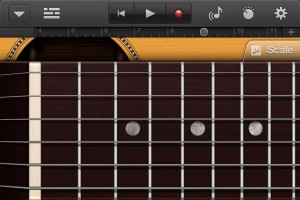 Thanks for taking time to listen to my music. This page provides an insight into some of my recent songs. In this article, I will talk about disparities between development platforms and end user experience.
Thanks for taking time to listen to my music. This page provides an insight into some of my recent songs. In this article, I will talk about disparities between development platforms and end user experience.
Technology. The songs I create are composed using a digital multitrack recording system called Garageband that conveniently fits in a shirt pocket when you use the version of Garageband designed for the iPhone. Instead of costing thousands of dollars, it’s available for $5 from Apple.
Disparities Between Development Platforms
and End User Experience
Garageband is capable of producing frequencies that can’t be reproduced by some speakers systems. As a result, there may be some low-frequency and high-frequenty instrumental sounds you can’t hear — leaving you with only part of the song — either because of your equipment, your hearing, or a little of both.
Sometimes I’ll compose a song while wearing nice headphones, and later go back and listen to it with just the iPhone speakers. I find the song can sound totally different.
Human Limitations. Anyone with a hearing impairment may miss out on some low or high frequencies. Since everyone has some degree of hearing impairment, it’s likely we each hear music slightly differently.
Equipment Limitations. Professional musicians have been known to ‘test’ songs during production to hear what they sound like on low-end equipment. This helps prevent the problem of something sounding great in the studio on expensive equipment, but later not sounding so good. Ideally, a song will be produced in a way that it would be optimized for the receiving equipment — boosting frequencies that are generally not produced well by the equipment the song will be played on.
Composition Issues. When composing a song that will be listened to on a small device, such as a ring-tone for a mobile phone, it’s necessary to use a relatively narrow frequency band. You might have a great song with a exceptional rhythm and bass track, but if those notes are too low to be reproduced on smaller devices, people will only hear the melody of your song.
Frequency Drop-off Considerations. Speakers generally have a range of frequencies they can produce equally efficiently. Above or below that range, the efficiency diminishes. So, let’s say a pair of speakers does really well with a few octaves around middle-c on a piano. If there’s an instrument producing notes or sounds slightly above or below that range, you can boost the volume for those notes. This will compensate for what would otherwise be a diminished sound on some devices.
Characteristics of Smaller Devices. Small devices are able to produce higher frequencies well, but not lower frequencies. This means violin and acoustic guitar or synthesizer sounds in the same frequency range will sound good, and sometimes will appear to sound better on an inexpensive small device than on a larger stereo system.
An Example from Web Design. A similar problem exists for those designing websites. They will design a site using a huge display and fast computer with large images locally stored on their hard drive. The site looks great and images load quickly. As soon as someone with a smaller display and slow internet connection tries to view the site, it’s slow and doesn’t fit on the smaller screen. So, what some developers do is test websites on a variety of computers and browsers to see how users will experience it.